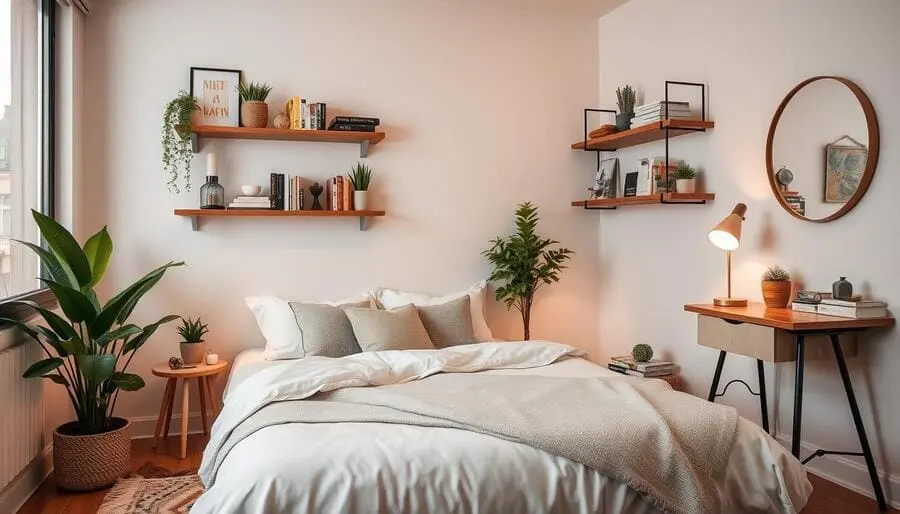Transforming a small room into a stylish and functional space can be a rewarding challenge. With the right approach, even the tiniest spaces can become visually appealing and organized. If you’re looking for inspiration, these 19 stunning small room decor ideas are designed to help you maximize every inch.
Whether you’re working with limited square footage or simply want to create a cozy, inviting atmosphere, these creative ideas will make your small room feel larger, brighter, and full of character. Get ready to turn your compact space into a room everyone will envy with these simple yet impactful design tips!
Table of Contents
Choosing the Right Color Palette for Small Rooms
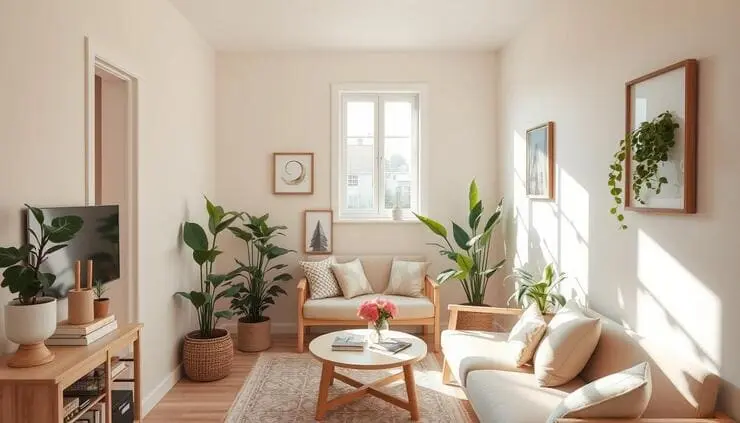
When it comes to small spaces, color is a powerful tool and a key element in successful small room decor ideas. Light and neutral shades, such as soft creams, pale grays, and muted pastels, create an airy and open feel, making the room appear larger.
Rich greens or deep blues are examples of accent colors that can offer personality without overpowering the room. Monochromatic colors schemes with subtle tonal variations can also establish a harmonious flow. Avoid using overly dark or contrasting shades that can visually shrink the room. Instead, think in layers—walls, furniture, and decor should complement each other seamlessly.
Maximizing Natural Light to Enhance Small Spaces

Natural light is a game-changer in compact rooms. Large, uncovered windows are ideal, but sheer curtains or blinds can provide privacy while still allowing sunlight to filter through. Reflective surfaces like glossy furniture, metallic finishes, or even strategically placed artwork can amplify natural light.
Consider trimming any outdoor foliage that might block the windows to let the sun cascade into your space. Pair natural light with light-colored walls for a dazzling, open effect.
Selecting Multifunctional Furniture for Small Rooms
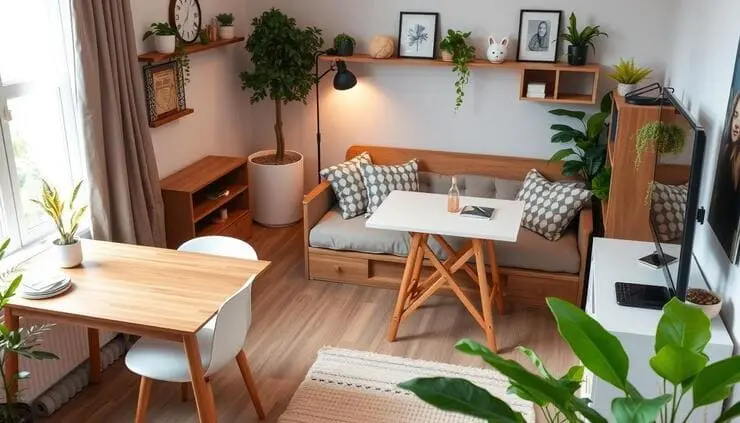
Multifunctional furniture is the unsung hero of small spaces, offering some of the best examples of space-saving furniture. Look for items like ottomans with hidden storage, foldable dining tables, or beds with built-in drawers that combine practicality with style.
A sleek sofa bed can double as seating during the day and a comfortable guest bed at night. Modular furniture pieces that adapt to various needs make small rooms highly versatile and efficient. Prioritize space-saving furniture with clean lines and minimal embellishment to maintain an open, uncluttered feel while maximizing functionality.
Vertical Storage Solutions
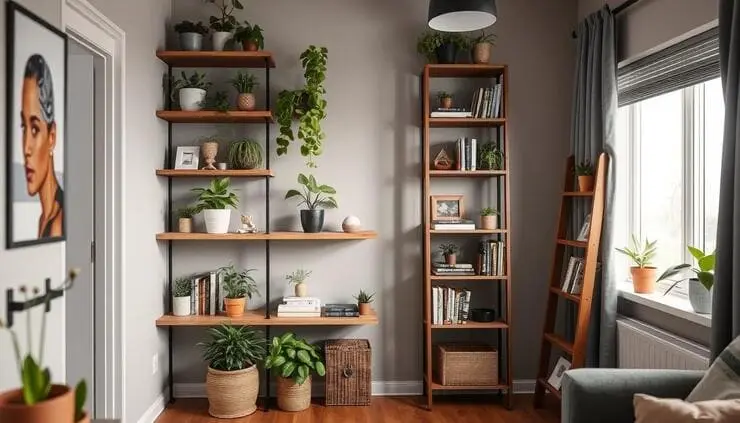
Vertical storage solutions are often underutilized in small rooms. Install floating shelves or tall bookcases to store items without consuming precious floor space. Wall-mounted cabinets or pegboards are perfect for organizing essentials in a visually appealing way.
Hang plants, artwork, or even light fixtures to draw the eye upward, creating the illusion of height. Don’t forget about the back of doors for hooks or racks, which can be handy for coats, bags, or accessories.
Incorporating Mirrors to Create an Illusion of Space
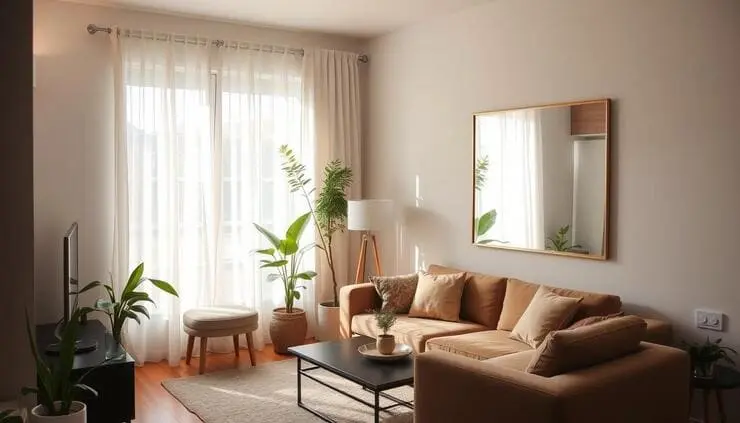
In small spaces, mirror placement is a decorator’s secret weapon and a vital aspect of many small room decor ideas. Strategically placing a large mirror across from a window not only doubles the amount of natural light but also creates a sense of depth that makes the room feel more expansive.
Mirrored furniture, such as side tables or cabinets, subtly enhances spaciousness while adding a touch of sophistication. For a modern flair, consider a gallery wall of smaller mirrors in various shapes and frames to reflect light and style. Leaning a tall mirror against a wall adds elegance and makes the ceiling feel higher, demonstrating the power of thoughtful mirror placement in transforming compact spaces.
Creative Wall Art Ideas for Small Room Charm
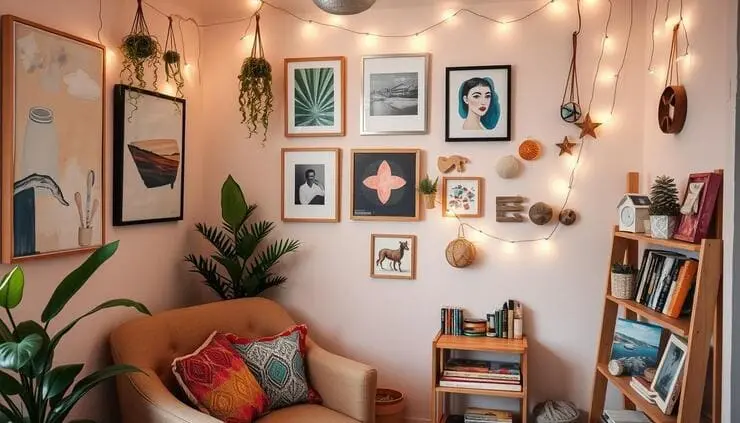
Wall art can transform a small room from bland to breathtaking. Opt for oversized prints or canvases to create a focal point without overcrowding. Gallery walls with a mix of photos, prints, and frames add personality but should be curated to avoid visual clutter.
Removable wall decals or textured panels offer unique ways to express your style without permanent commitment. Use art to tell a story, reflecting your taste while keeping the room cohesive.
Decorating with Minimalist Themes to Avoid Clutter
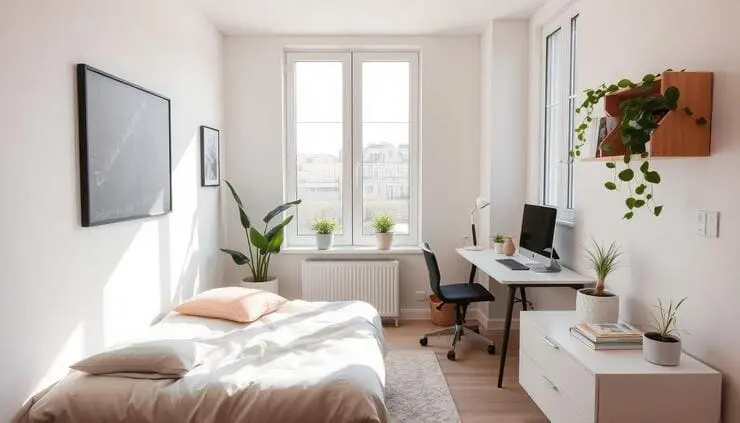
Minimalism thrives in small spaces, focusing on quality over quantity. Choose a few statement pieces—like a unique vase or a bold armchair—and let them shine. Keep surfaces clear and avoid over-decorating.
Storage should be hidden or seamlessly integrated into the design. Neutral tones paired with natural materials, such as wood or stone, bring warmth without chaos. Minimalist styles is not about doing less; it’s about making deliberate, thoughtful choices.
Choosing the Perfect Lighting to Brighten Small Spaces
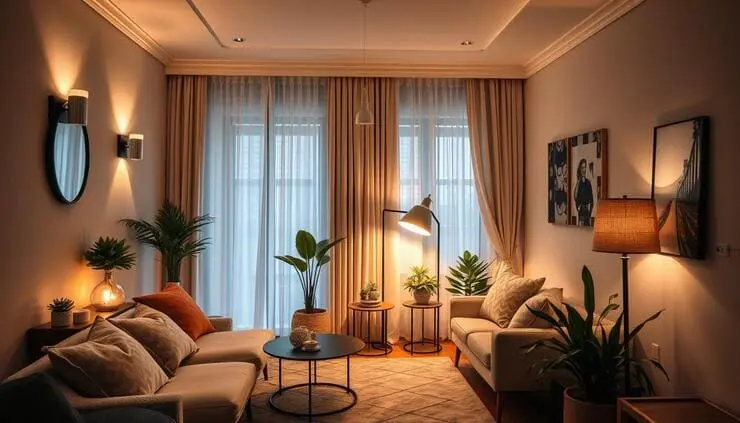
Layered lighting can dramatically transform a small room. Begin with ambient lighting from ceiling fixtures or recessed lights. Add task lighting, such as a desk lamp or under-cabinet LEDs, for specific activities. Finally, incorporate accent lighting like fairy lights, wall sconces, or candles to create a cozy atmosphere. Dimmable options allow you to adjust brightness according to the time of day, while warm tones prevent the space from feeling clinical.
Incorporating Plants for a Fresh and Inviting Feel
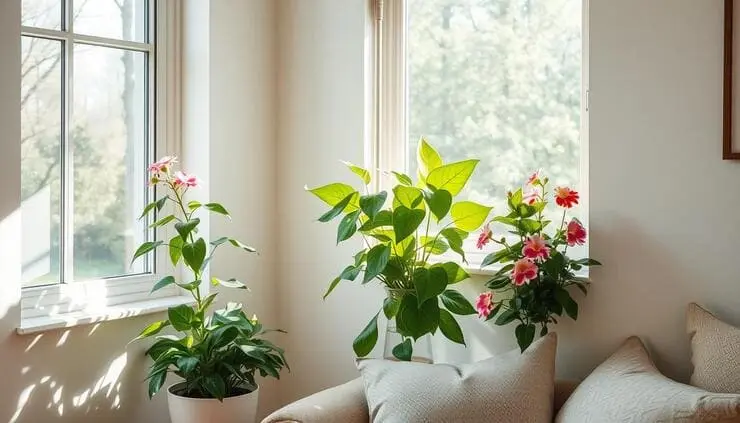
Houseplants breathe life into any room, making them a perfect addition to small room decor ideas. Vertical planters or wall-mounted pots save valuable floor space while adding vibrant greenery and charm. Choose low-maintenance plants like pothos, succulents, or snake plants to keep care effortless and stress-free.
Even a single, well-placed fiddle-leaf fig in a corner can become a striking decor element that enhances the overall aesthetic. Don’t overlook the appeal of hanging plants, which create visual interest and texture without crowding surfaces, seamlessly blending function and beauty in compact spaces.
The Role of Textures in Enhancing Small Room Aesthetics
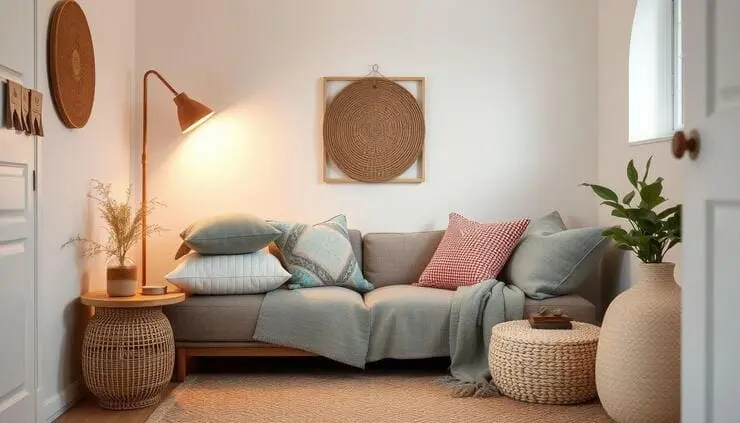
Texture adds depth and richness to small rooms. A mix of materials—soft velvet cushions, rustic wooden tables, sleek metal accents—prevents the space from feeling flat. Layered textiles, such as a knit throw over a smooth leather chair, bring tactile variety. Subtle contrasts, like a shaggy rug against smooth hardwood floors, make the room feel thoughtfully curated. Focus on a cohesive palette to tie these textures together harmoniously.
Decorative Rugs as Statement Pieces for Small Floors
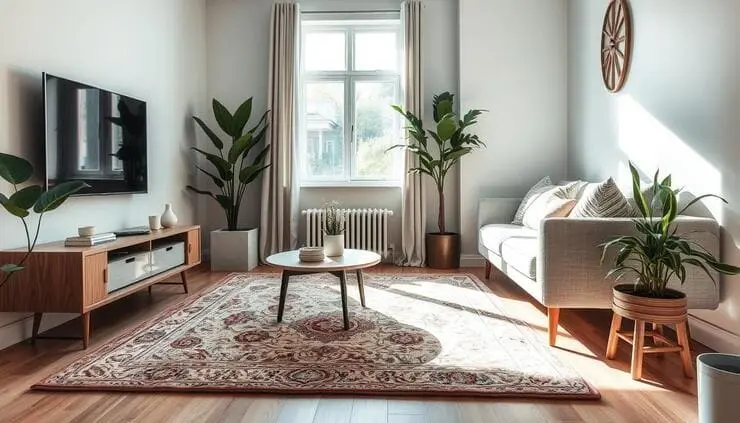
A well-chosen rug can anchor a small room and define its style. Opt for rugs with bold patterns or vibrant colors to make a statement. Light-colored rugs with subtle designs work well in rooms with a minimalist aesthetic. A circular rug can soften harsh angles and add visual interest. Ensure the rug is proportionate to the room—too large, and it overwhelms; too small, and it feels disconnected. Use rugs to delineate areas, especially in multi-functional spaces.
Utilizing Curtains and Blinds to Frame Small Spaces
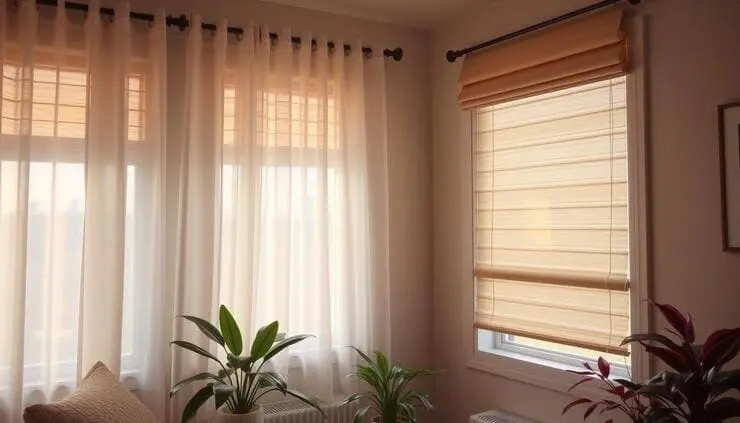
Curtains and blinds do more than provide privacy; they can shape the perception of space in a small room. Opt for floor-to-ceiling curtains in light, airy fabrics to create the illusion of height. Sheer materials allow natural light to filter in, keeping the room bright and open. Roman blinds are a sleek alternative, offering a tailored look without adding bulk. For a dramatic effect, choose curtains with vertical stripes to draw the eye upward or go for neutral tones that blend seamlessly with the walls.
Arranging Furniture Strategically to Open Up Small Rooms
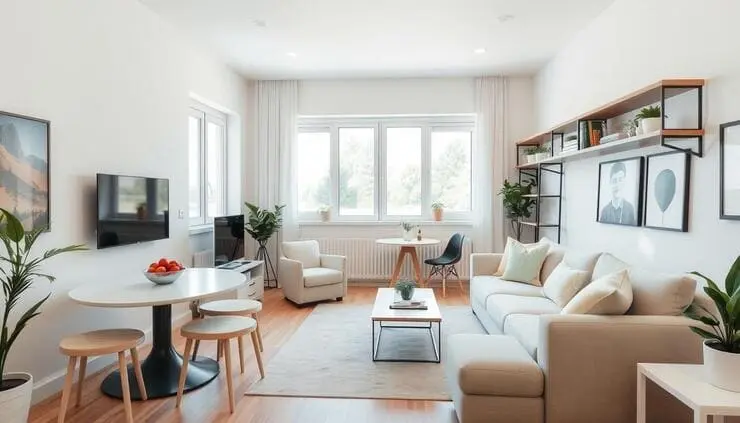
The placement of furniture is pivotal in maximizing small spaces and is a cornerstone of effective small room decor ideas. Avoid crowding the room by positioning larger pieces against the walls, leaving an open central area for better flow. Use visual trickery by angling sofas or chairs to break up rigid lines and add interest.
Floating furniture, such as a sofa or console table placed slightly away from the wall, can create a sense of depth and sophistication. Clear pathways make the space feel more navigable and less cramped, while a symmetrical arrangement fosters order, making even the tiniest room appear well-proportioned and inviting.
Creating Focal Points to Draw Attention Away from Size
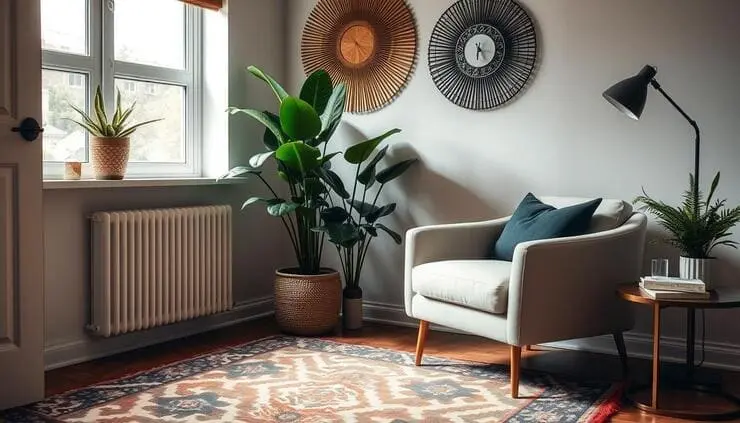
A striking focal point can shift the focus from the room’s dimensions to its character. In a small living room, this might be a bold piece of artwork, a vibrant area rug, or a statement light fixture. In bedrooms, a uniquely upholstered headboard or a canopy bed can command attention. The key is to keep the surrounding decor understated, allowing the focal point to shine without overwhelming the space.
Using Built-In Shelving for a Seamless Storage Solution
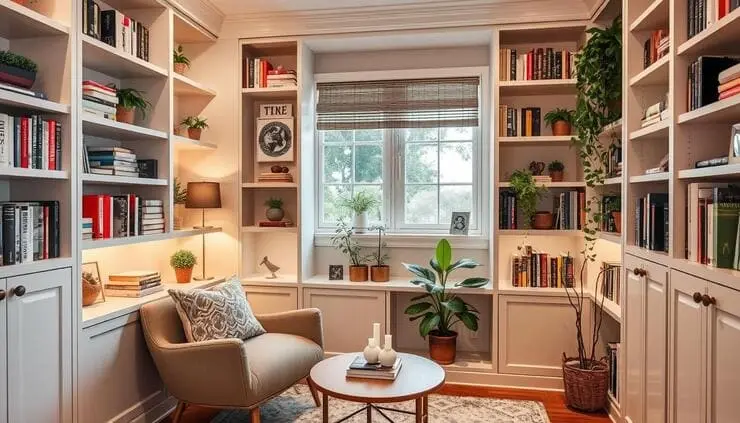
Built-in shelving offers both functionality and style in small rooms. These custom installations fit snugly into nooks and corners, maximizing every inch of space. Use them to showcase books, décor, or plants while maintaining a clear floor space.. Painted in the same color as the walls, built-ins create a cohesive look, blending into the architecture rather than standing out as separate elements. Consider adding adjustable shelving to cater to changing storage needs.
Incorporating Foldable and Hidden Furniture Options
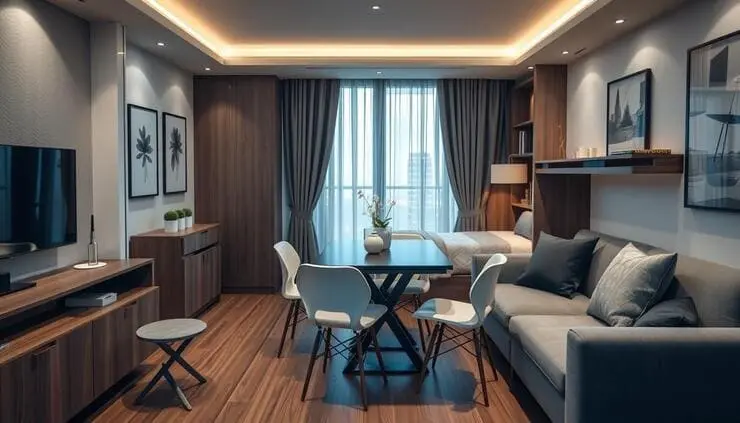
Foldable and hidden furniture pieces are the ultimate space-savers. Murphy beds that tuck into the wall during the day or expandable dining tables that double as desks are perfect for small rooms. Nested tables offer flexibility for entertaining, while fold-out chairs or ottomans can provide extra seating without occupying permanent space. Look for furniture with concealed compartments to combine storage and utility seamlessly.
Layering Lighting for Ambiance and Practicality
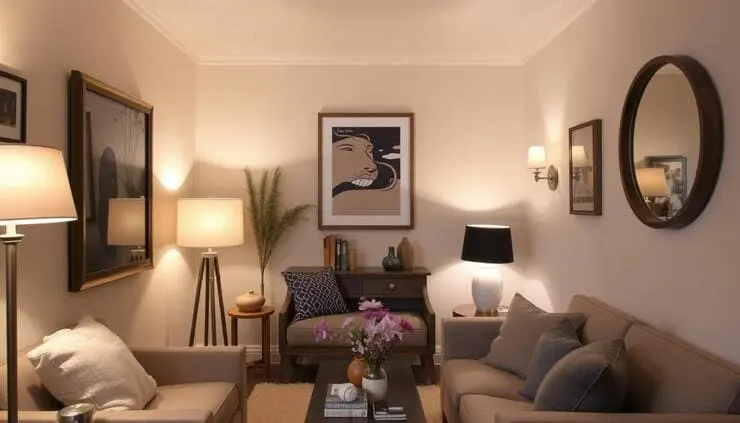
Small rooms benefit greatly from layered lighting, which combines different types of light sources. Begin with ambient lighting, such as recessed ceiling fixtures or a central pendant light, to establish the room’s foundation. Add task lighting, like desk lamps or under-cabinet strips, to illuminate specific areas. Finally, incorporate accent lighting—string lights, candles, or wall sconces—for warmth and character. A well-lit small room feels cozy yet expansive.
Creating Separate Zones in Multi-Functional Small Rooms
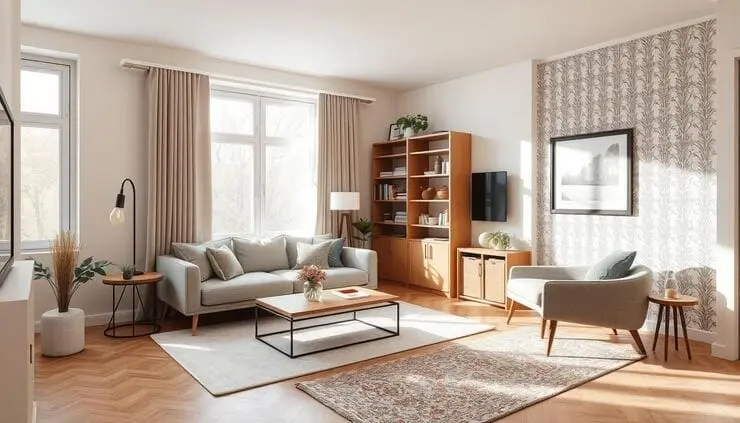
In small spaces that serve multiple purposes, creating distinct zones is essential. Use rugs to delineate areas, such as a seating corner in a living room or a reading nook in a bedroom. Folding screens or open shelving can act as subtle dividers without making the space feel closed off. Paint or wallpaper different sections to visually separate them while maintaining an overall cohesive aesthetic. Clear zoning ensures each function is well-defined without causing clutter.
Optimizing Corners for Extra Storage or Seating
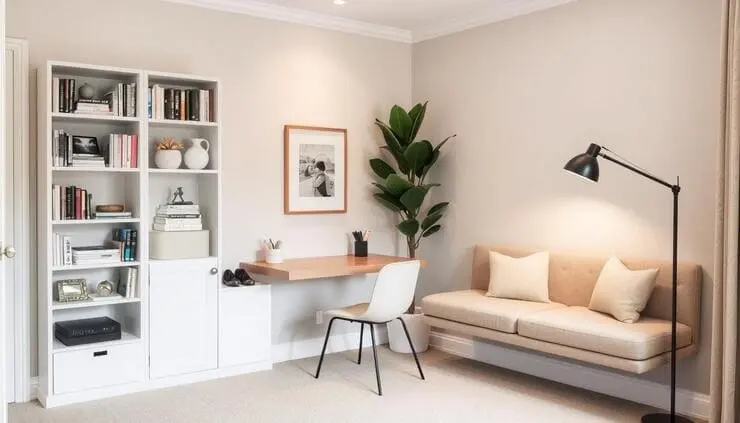
Corners, often overlooked, can become invaluable in small rooms. A corner bookshelf or cabinet provides extra storage without intruding into the room. Install a floating corner desk to create a compact workspace or a cozy banquette with built-in storage for dining. For a simple touch, add a tall houseplant or a floor lamp to make the corner a visually pleasing feature rather than a forgotten space.
Using Bold Accent Walls to Add Personality to Small Rooms
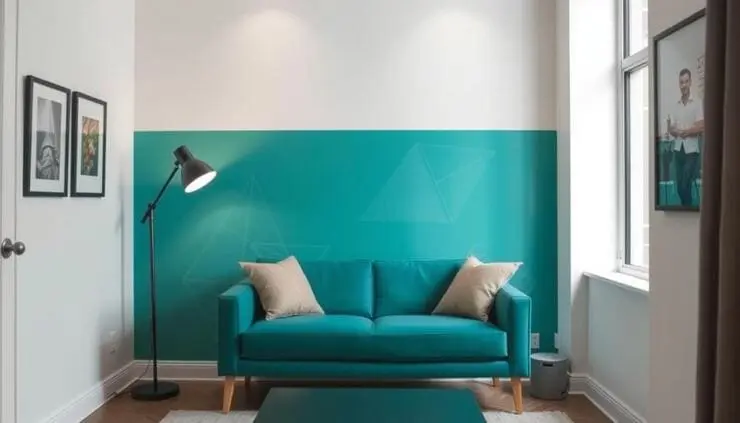
An accent wall can transform a small room, injecting it with personality and style. Choose a vibrant paint color, patterned wallpaper, or textured cladding for one wall to serve as the room’s centerpiece. To prevent overpowering the room, keep the other walls neutral. An accent wall behind a bed or sofa can anchor the room, making it feel grounded and visually dynamic.
Adding Floating Furniture for a Modern Look
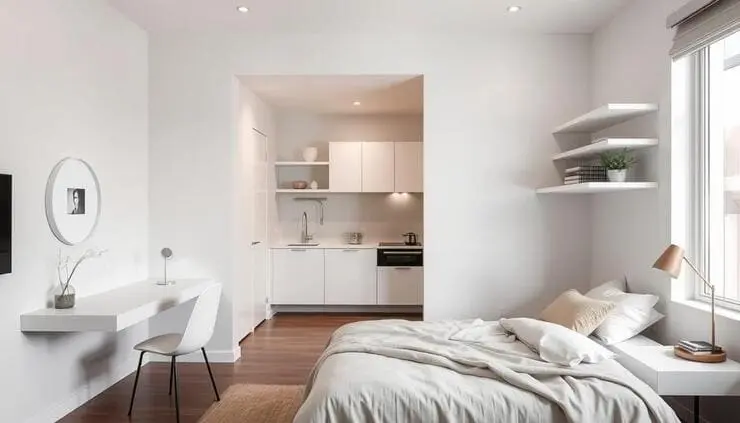
Floating furniture, such as wall-mounted desks, shelves, or vanities, gives the illusion of more floor space. These sleek pieces create a contemporary aesthetic while maintaining functionality. In small kitchens, floating countertops or bars provide additional workspace without the bulk. Use floating nightstands in bedrooms to keep the floor area clear, emphasizing a minimalist vibe.
Decorating Small Rooms with Open Shelving Concepts
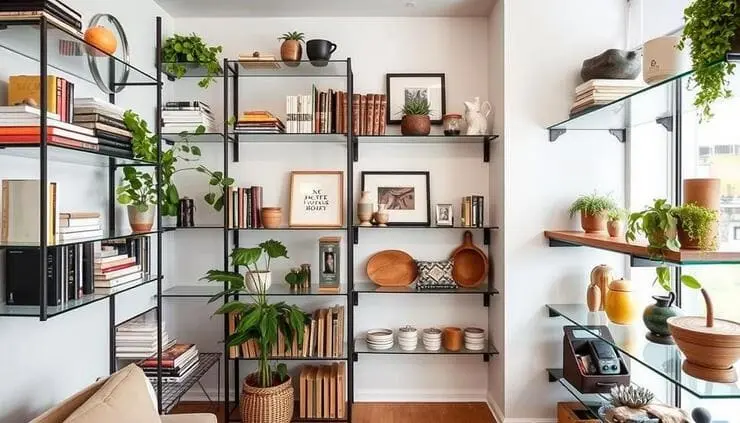
Open shelving strikes the perfect balance between storage and display in small spaces. Use these shelves to showcase a curated collection of books, decor, or plants. Keep the arrangement neat and intentional to prevent the area from feeling cluttered. Glass or acrylic shelves blend into the room, providing utility without visual weight. For kitchens, open shelving keeps essentials within reach while adding a rustic or industrial touch.
Maintaining a Balanced Layout for Visual Harmony

Achieving balance is crucial in small rooms to avoid a chaotic appearance. Distribute furniture and decor evenly across the space, keeping the visual weight balanced. For instance, pair a heavy sofa with a lighter coffee table or match a large artwork with smaller wall accents. Ensure negative space—a gap between furniture or open walls—is maintained for breathing room. Balance isn’t just about symmetry; it’s about creating a cohesive flow that feels intentional and inviting.
Conclusion
Decorating a small room requires thoughtful choices, but the results can be truly rewarding. By embracing smart design principles—like layering lighting, optimizing storage, and incorporating bold focal points—you can turn any small space into a welcoming and functional haven. Each element, from curtains to furniture, plays a vital role in creating balance and harmony. Remember, it’s not about the size of the room; it’s about how you make it feel. With these ideas, you can craft a space that’s brimming with personality, comfort, and charm.

